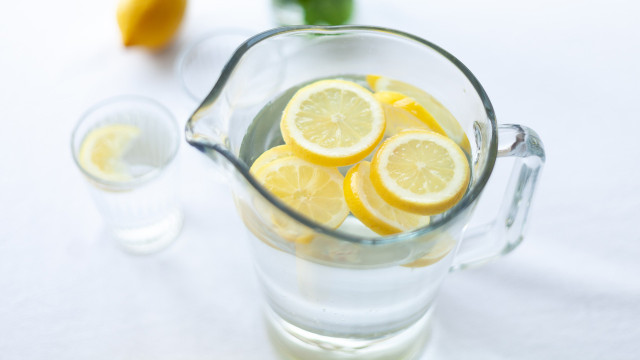
It usually takes a while for cold, fresh water to come out of the tap in the morning. People often say you should let the water run first. But is that really necessary? We have tips and important information.
It is a well-known tip to let tap water run for a few seconds before drinking it until fresh, cool water comes out. The reason for this measure is that bacteria (legionella) could have multiplied in the water pipes. In view of the water crisis caused by climate change, however, it is still a cause for concern when many liters of water disappear unused down the drain.
We asked: Should you let the water run first thing in the morning? Does this rule even make sense anymore?

First of all, it is important to know:
- Tap water is the best thirst quencher – and drinking plenty is important, not just on hot days or when we exercise.
-
Anyone who drinks tap water protects the climate and the environment: “The climate impact of mineral water in Germany is almost 600 times higher than that of tap water,” explains the consumer advice center.
- Tap water is about 100 times cheaper than purchased mineral water – and is generally just as recommendable.
- You can safely drink tap water almost everywhere in Germany at any time of the year.
Should you let the water run first thing in the morning?
Yes, recommend the water suppliers, the Federal Environment Agency and the consumer advice center.
Drinking water that has been in the pipes for more than four hours should not be used to prepare food or drinks, recommends the consumer advice center. If no water has flowed through the pipes for several hours, you should let the water run until it comes out of the tap cool.
This is because so-called “stagnant water” (that is, water that has been standing in the pipes for several hours or days) is no longer fresh: substances from the fittings and pipes can settle in the water, and germs and bacteria can multiply.
For this reason:
“We recommend letting the water run until it stops getting colder. Depending on the floor and the distance the water has to travel from the pipe network to the tap, this can be 15 to 60 seconds,”
Astrid Hackenesch-Rump from Berliner Wasserbetriebe explains to Utopia. This is especially important when preparing baby food.
Important: When you return home from your vacation, you should first turn on the taps and let the stale water drain away. About ten liters should flow through the pipes before you drink it.
How do I recognize fresh water? If the water coming out of the tap is cooler than the stagnant water, it is fresh.
And what about water waste? Health comes first in this case. If you are concerned about the large amount of water that ends up unused and goes straight down the drain, you can easily save the water and use it for other purposes:
Saving water: 6 tips
If you don’t want to waste the first few liters of stale, lukewarm water that comes out of the tap, you can collect it in buckets, large pots or jugs and use it in a variety of ways – for example:
- for watering houseplants
- for watering the garden
- to clean
- for rinsing
- to wash yourself
- for watering city trees
You can also save water in other ways without much effort: for example, by taking shorter showers, using a water-saving shower head or watering plants with rainwater.
Are Legionella bacteria a threat to our drinking water?
Legionella, i.e. bacteria that occur naturally in fresh water, can multiply in hot water pipes. Legionella in tap water can cause flu-like illnesses and even severe pneumonia.
It is important to know:
- The risk of Legionella does not arise from water that has only been in the pipes for a short time, but especially after long absences, e.g. after a vacation.
- The risk of Legionella is less from drinking water than from showering, when the water is nebulized and inhaled.
-
Legionella can hardly spread at temperatures below 20 degrees Celsius. The temperature of groundwater in Germany is usually between 10 and 15 degrees, so cold drinking water is completely unproblematic.
After returning from vacation, you should let the water in the bathroom and kitchen run at maximum temperature for a few minutes: temperatures above 60 degrees kill the bacteria.
With regard to energy costs, you occasionally hear the tip that you can lower the temperature of hot water systems. However, you should not lower this temperature too much because of the risk of legionella, but leave it at at least 60 degrees. “The warm water should always have a temperature of at least 55 degrees everywhere in the pipe system and always maintain a temperature of at least 60 degrees at the outlet of the drinking water heater,” recommends the Federal Environment Agency. Read also: Saving energy: Does a reduced water temperature increase the risk of legionella?
If you are still unsure, you can have your water tested for Legionella by a private provider, e.g. at wassertest-online.de.
Read more on Techzle\.com:
- Residual water in the kettle: use it or throw it away?
- Testing tap water: reasons and contact points
- Mineral water test: uranium, nitrate and pesticides – which is the best water?
** marked with ** or orange underlined Links to sources are partly affiliate links: If you buy here, you are actively supporting Techzle\.com, because we then receive a small part of the sales proceeds. .